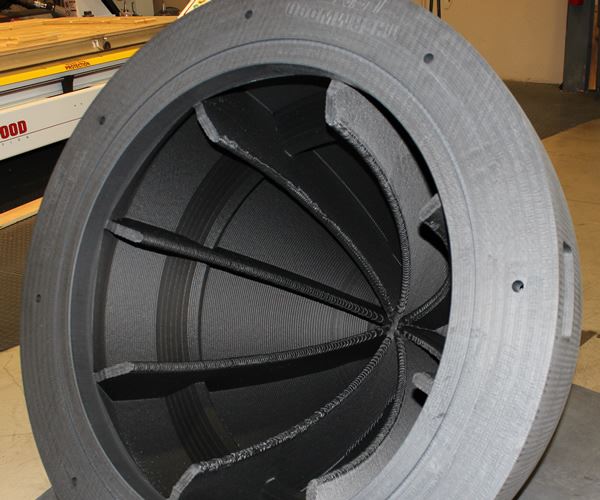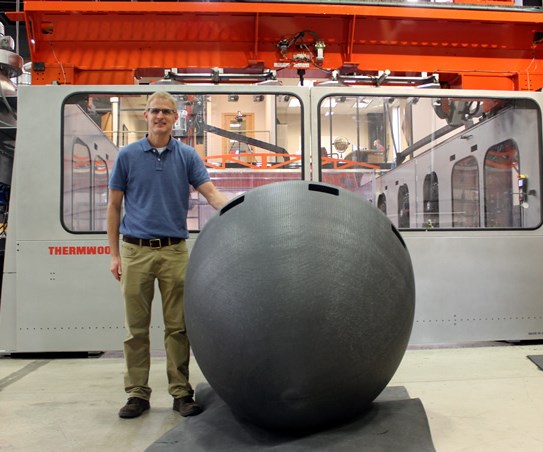Thermwood and U.S. Navy Complete Validation for AM Marine Program
The validation program centered on printing an unclassified scale nose of a submarine using Thermwood’s Large Scale Additive Manufacturing (LSAM) system.
Thermwood Corp. has entered into a collaborative program with the Naval Surface Warfare Center, Carderock Division to explore the use of additive manufacturing technology in developing marine models for ship and ship systems testing.
The initial validation program was centered on printing an unclassified scale nose of a submarine using Thermwood’s Large Scale Additive Manufacturing (LSAM) system, an industrial additive manufacturing system intended for the production of large-scale components. The part was printed using 20 percent carbon fiber-filled ABS in 11 hours and 45 minutes using traditional horizontal layer printing and a 40-mm melt core. Final trim required 5 hours. Both printing and trimming were completed on the same machine, using Thermwood’s 10 × 20-ft. LSAM at its demonstration lab in Southern Indiana.
Because of layer cooling requirements, the print rate for this part was less than half of the maximum rate the machine is capable of, according to Thermwood. The company expects that, moving forward, the program will include the printing of additional components using both horizontal and vertical layer printing.
This story originally appeared on compositesworld.com.
Related Content
-
Video: For 3D Printed Aircraft Structure, Machining Aids Fatigue Strength
Machining is a valuable complement to directed energy deposition, says Big Metal Additive. Topology-optimized aircraft parts illustrate the improvement in part performance from machining as the part is being built.
-
Video: AM for Repair of Large Shafts
Wind power shafts that might once have been scrapped are now returned to service. See the robotic directed energy deposition (DED) and shaft preheating system developed by Ikergune, Izadi and Talens.
-
Alquist 3D Looks Toward a Carbon-Sequestering Future with 3D Printed Infrastructure
The Colorado startup aims to reduce the carbon footprint of new buildings, homes and city infrastructure with robotic 3D printing and a specialized geopolymer material.













